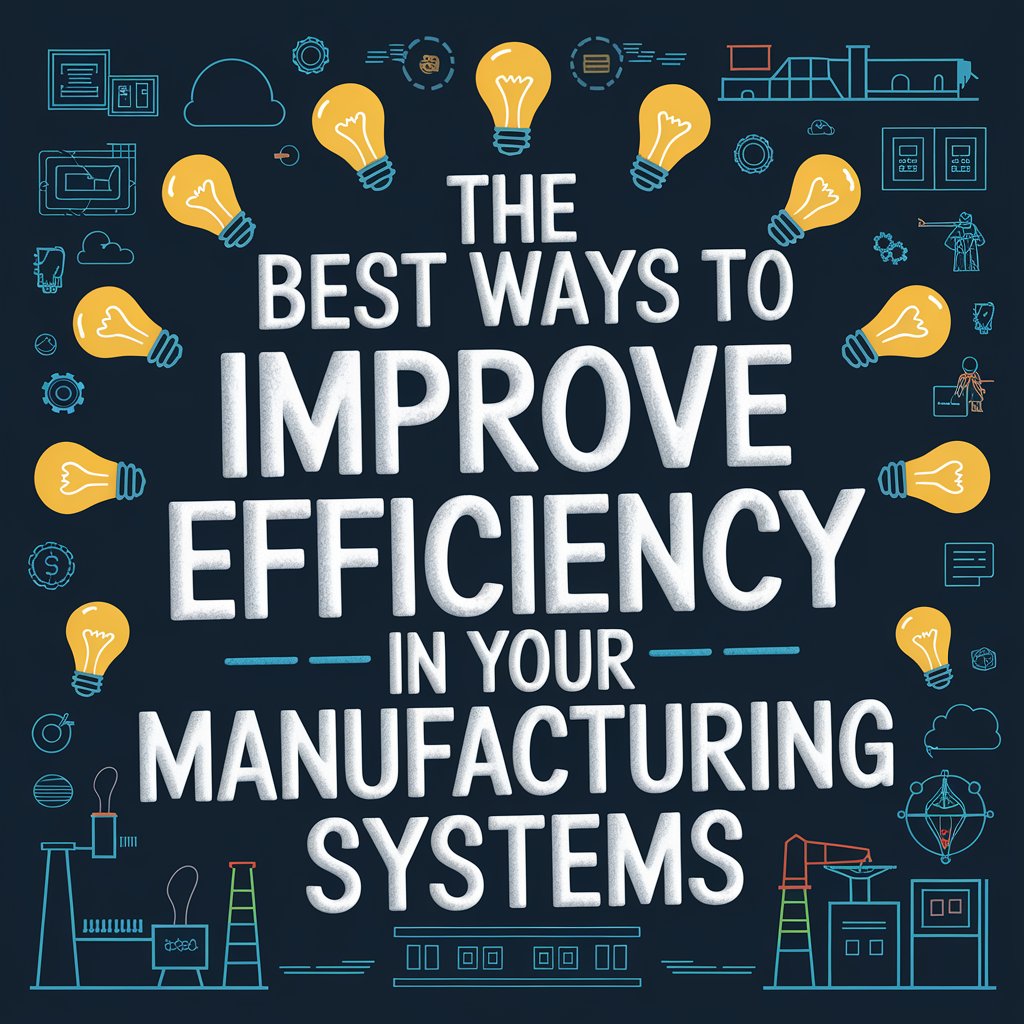Success in manufacturing is all about efficiency. If you can produce your core products using fewer resources and less energy, and you can produce those products effectively, you stand to make a lot of money.
Unfortunately, optimizing for efficiency in a manufacturing system is sometimes a complicated affair. There are lots of moving parts in your facility, and you’ve probably already designed it with efficiency in mind.
How are you supposed to continue optimizing for efficiency in such tight conditions, especially when you’re working with a limited budget?
Equipment
You can start by looking at some of your manufacturing equipment. Ostensibly, all your equipment will already be serving their intended purposes. They work well enough to ground and facilitate your core operations, and there aren’t enough issues for them to be fully scrapped and replaced.
However, upon audit, you may discover that certain pieces of your equipment aren’t perfectly suited to the task, or that they could be upgraded or replaced with something better. For example, superior nitrogen purging systems can streamline your operations and prevent certain types of issues.
Obviously, replacing equipment is an expensive and logistically challenging ordeal in some cases. So how do you decide whether or not it makes sense to move forward?
The simple answer is to conduct a straightforward cost benefit analysis. How much will it cost you to replace this piece of equipment? Can you quantify the benefits you’ll receive by replacing it? If so, how long will it take for this piece of equipment to pay for itself?
Bit by bit, you should be able to make all the equipment replacements and upgrades necessary to help your manufacturing facility reach peak productivity.
Layout
You’ll also need to think about the layout of your manufacturing facility. Even simple changes can make a big difference in terms of productivity and eventual output. For example, putting two closely related pieces of equipment next to each other can shorten the distance that employees have to travel to engage with both.
Processes
The human element is ripe for efficiency optimization, since human beings are notoriously fallible and imperfect. Accordingly, you can look at your existing processes and productive conduct to make meaningful tweaks for the better.
Manufacturing bottlenecks can present a major wrinkle for any manufacturing operation. Closely scrutinize any potential bottlenecks in your production process. What are the root causes? Who or what is responsible for them? What changes can you make to prevent them in the future?
In many cases, standardization can also be a solution to process problems. If your processes are ambiguous, if they’re overly complicated, or if they simply aren’t being communicated effectively, standardizing and documenting them can make a big difference.
In terms of productivity and efficiency, reducing downtime can make a big impact as well. Take note of when employees aren’t actively contributing to production. This is naturally going to happen at times, but excessive downtime is an issue that needs to be resolved.
Finally, consider automating as much as you can. Today’s technology makes it possible to automate a much wider range of tasks and activities, so you should be capable of streamlining your operations while simultaneously reducing the costs and error pronation of human labor.
Waste
Take a close look at the waste generated by your manufacturing processes, including wasted resources, materials, and even final products. What are the root causes of this type of waste? Is there any way you can reduce this waste? Can you recycle it or reuse it in a way that’s beneficial to the manufacturing business?
Software
In many cases, manufacturing software can help you identify and resolve potential issues in your operations. The right software platform can allow you to automate certain processes, increase transparency, and even implement solutions to whatever problems you happen to find.
For instance, Geometric dimensioning and tolerancing (GD&T) software can be crucial in ensuring precision in design and manufacturing, allowing you to better manage and communicate product specifications and tolerances.
Additionally, Enterprise Resource Planning (ERP) software can streamline operations by integrating all aspects of production, inventory, and scheduling into one unified platform. Likewise, Computer-Aided Design (CAD) software helps designers create detailed product blueprints and 3D models, while Manufacturing Execution Systems (MES) track and control manufacturing processes in real time, ensuring efficient production and quality control.
However, it’s important to be discerning. There are many software platforms designed for manufacturers, but not all of them are equally efficient or cost-effective. Do your due diligence when choosing software platforms for manufacturing management, especially when it comes to specialized tools like geometric dimensioning and tolerancing software, which require a high degree of accuracy and technical expertise.
The Team
In manufacturing environments, the right team can make all the difference. With better recruiting, hiring, onboarding, education, and training, you can prepare a team that can work far more diligently and efficiently. Good leadership can communicate the core values of your organization more effectively and ultimately allow your team to thrive in this environment.
The search for greater efficiency in manufacturing is a never-ending one. It’s impossible to have a manufacturing operation that’s perfectly productive and sustainable. However, every effort you make to improve the efficiency and smoothness of your manufacturing processes is going to increase your profitability and decrease the occurrence of problems and complications.
Because of this, every change you make for the better counts.






